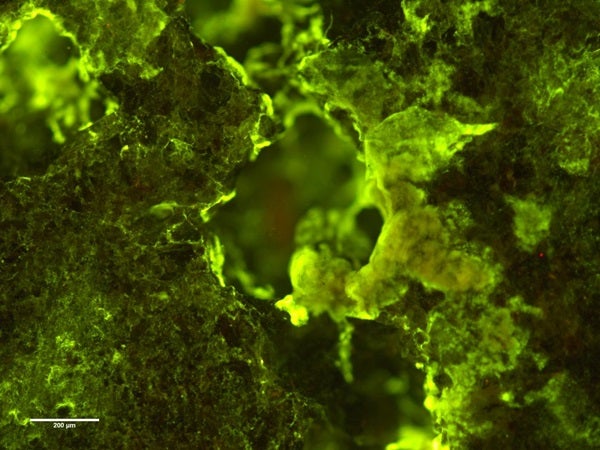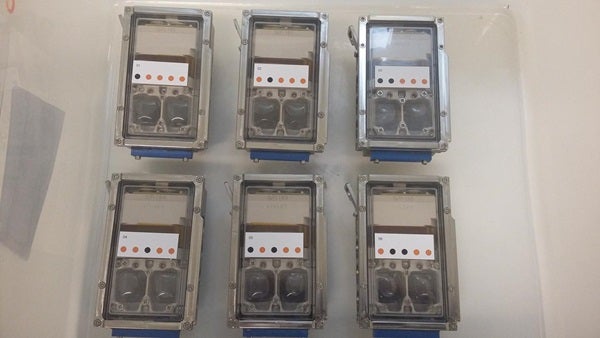The process, called biomining, is already in use on Earth. In space, it could dramatically boost our ability to gather materials, rather than invest the money and energy to carry such materials with us. Gathering materials from our destination reduces the cost, complexity, and even (earthly) environmental impact of space exploration. The key to biomining off-world, however, is determining whether microbes that are used to Earth’s environment — in particular, its gravity — are capable of performing the same tasks under vastly different conditions. At the moment, scientists still know very little about how any Earth-based biology fares in these alien environments.

Bringing the universe to your door. We’re excited to announce Astronomy magazine’s new Space and Beyond subscription box – a quarterly adventure, curated with an astronomy-themed collection in every box. Learn More >>.
Break it down
The BioRock study is the first to test extraterrestrial biomining by sending 18 matchbox-sized “biomining reactors” containing microbes and rock samples to the ISS.
Based on previous work, scientists know that low or no gravity can affect how well microbes stick to surfaces, which is a key component of biomining. Microbes need to effectively cover the rock, creating a layer called a biofilm, in order to get to work.
Researchers already know that microbes form thicker biofilms in space, as well as biofilms with unique shapes and structures. With BioRock, scientists are targeting microbes and materials they expect to use in future biomining operations. One such material is basalt rock, which is common on Earth, the Moon, and Mars. Basalt is also useful, team member Rosa Santomartino at the University of Edinburgh said in a press release, because it naturally contains spaces that will allow researchers to see how well the microbes can grow into the rock.
The experiment will expose these matchbox-sized biomining reactors to different levels of gravity, including simulated Mars gravity and the general microgravity environment of the space station. A recent experiment applied a similar approach to testing how mice develop in different amounts of gravity.
Space-faring alliance
In addition to mining raw materials, bacteria could be the key to turning the surfaces of desolate worlds such as the Moon or Mars into fertile farmland where visitors or colonists could grow their own food. That would, again, majorly cut down on the amount of food needed for long-term missions, while also providing much-needed variety and nutrition that are difficult to provide in space rations today.
The BioRock experiment is designed to last three weeks, after which the reactors will be sent back to Earth for study at Stanford University. Upon completion, the team already has plans for future experiments. They hope to study more microbes and materials, allowing them to try out different combinations to find the right microbes for the job, no matter where in the solar system that work might take them — and us.
“As we move into space, we can harness microbes to make our lives easier and improve the success of space settlements,” Cockell said. “BioRock is about forming a new space-faring alliance with the microbial world — using microbes to advance a permanent human presence in space.”











